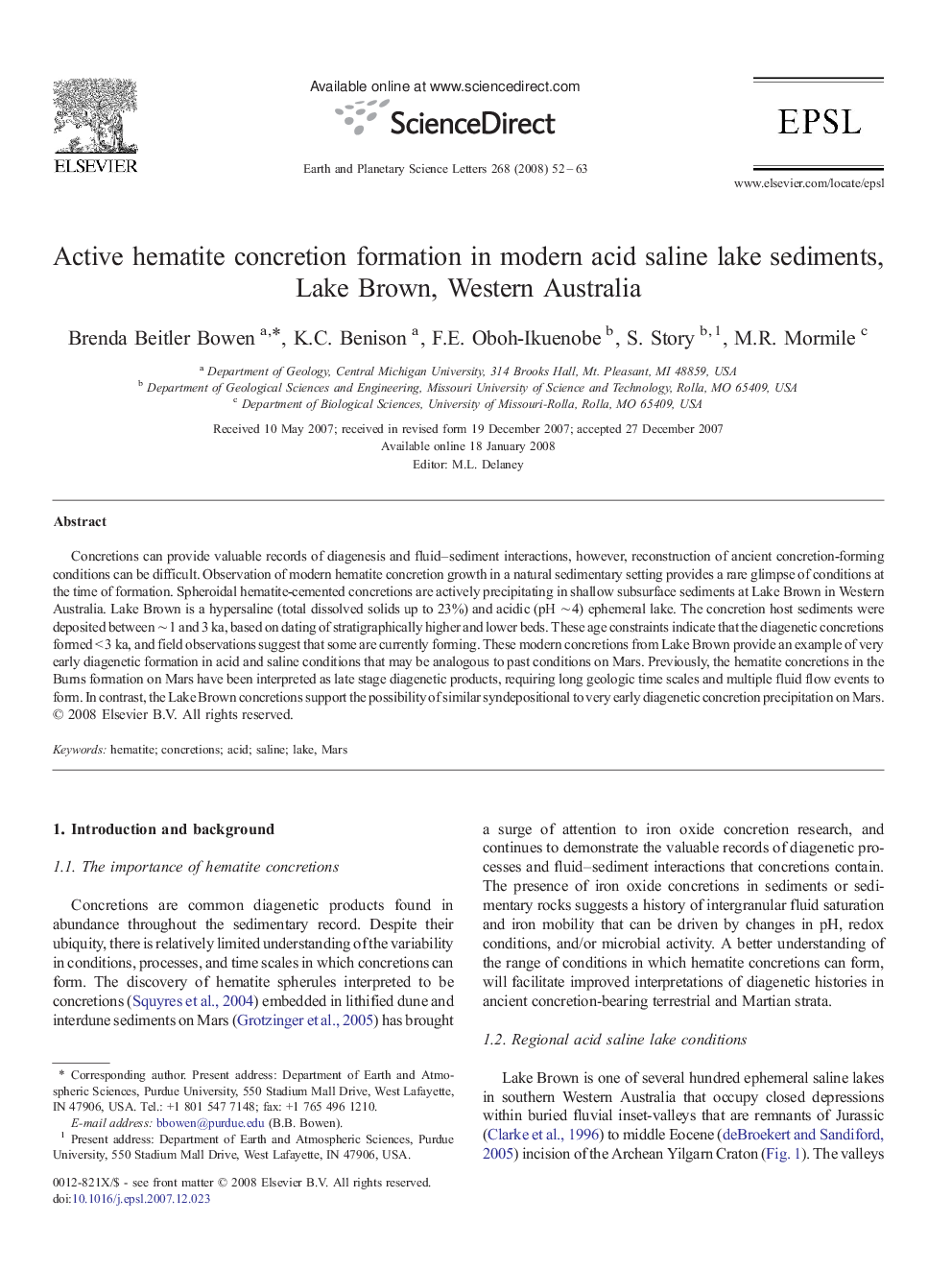| Article ID | Journal | Published Year | Pages | File Type |
|---|---|---|---|---|
| 4679746 | Earth and Planetary Science Letters | 2008 | 12 Pages |
Concretions can provide valuable records of diagenesis and fluid–sediment interactions, however, reconstruction of ancient concretion-forming conditions can be difficult. Observation of modern hematite concretion growth in a natural sedimentary setting provides a rare glimpse of conditions at the time of formation. Spheroidal hematite-cemented concretions are actively precipitating in shallow subsurface sediments at Lake Brown in Western Australia. Lake Brown is a hypersaline (total dissolved solids up to 23%) and acidic (pH ∼ 4) ephemeral lake. The concretion host sediments were deposited between ∼ 1 and 3 ka, based on dating of stratigraphically higher and lower beds. These age constraints indicate that the diagenetic concretions formed < 3 ka, and field observations suggest that some are currently forming. These modern concretions from Lake Brown provide an example of very early diagenetic formation in acid and saline conditions that may be analogous to past conditions on Mars. Previously, the hematite concretions in the Burns formation on Mars have been interpreted as late stage diagenetic products, requiring long geologic time scales and multiple fluid flow events to form. In contrast, the Lake Brown concretions support the possibility of similar syndepositional to very early diagenetic concretion precipitation on Mars.
